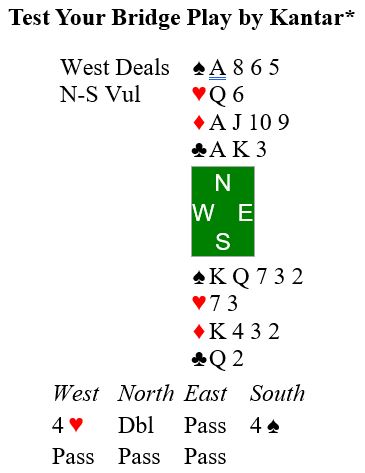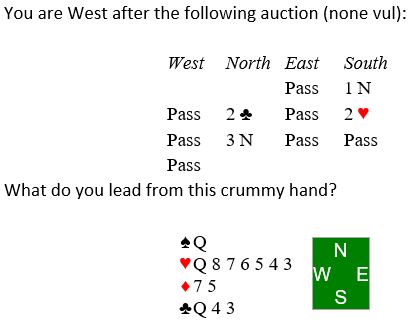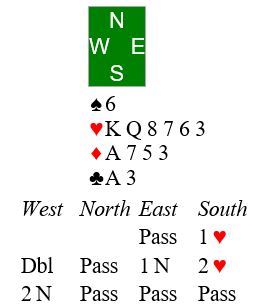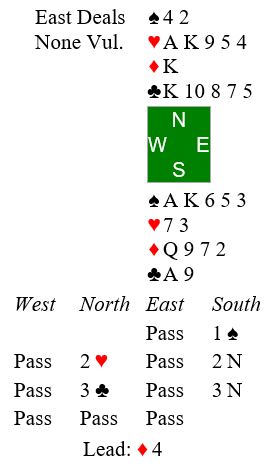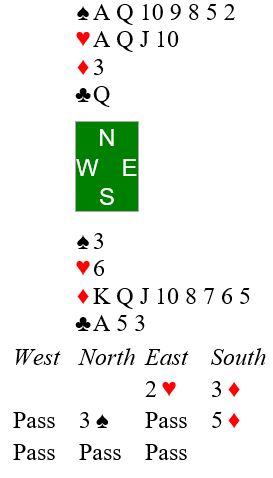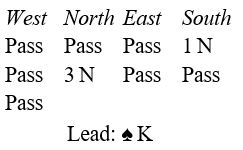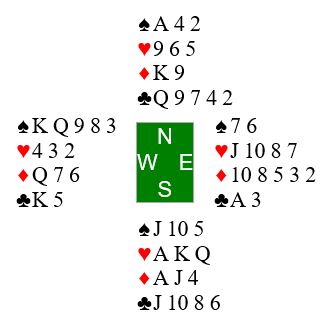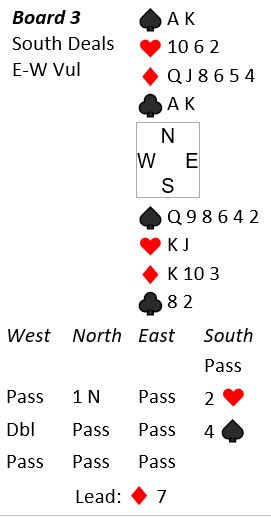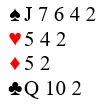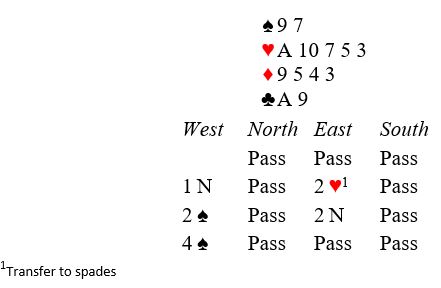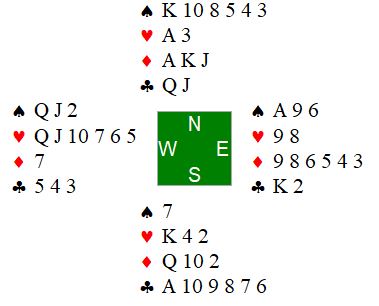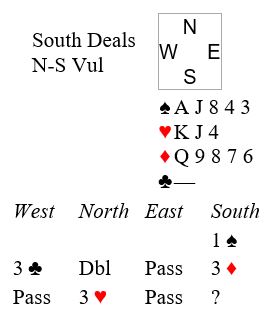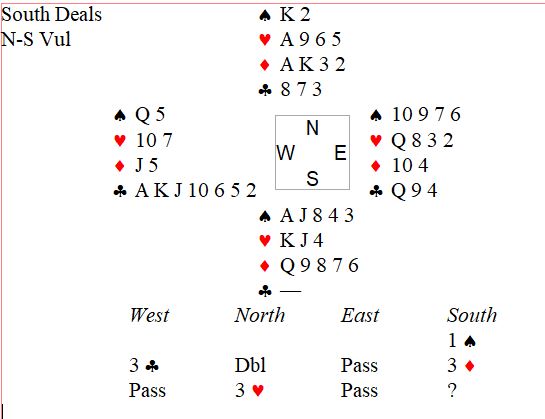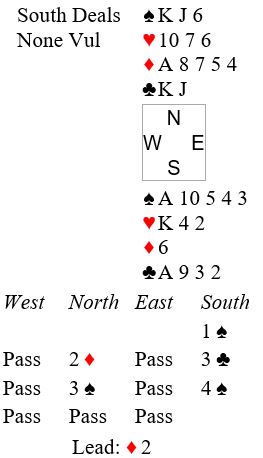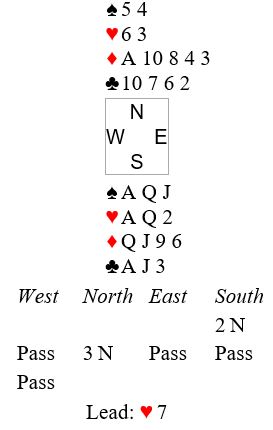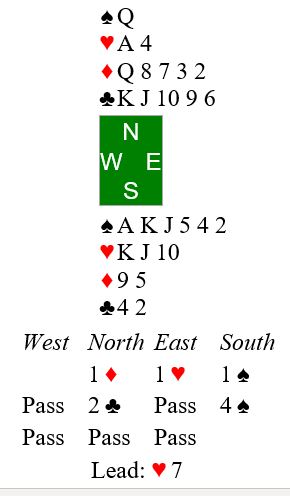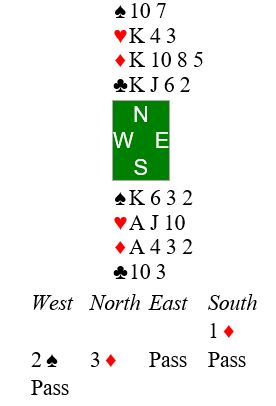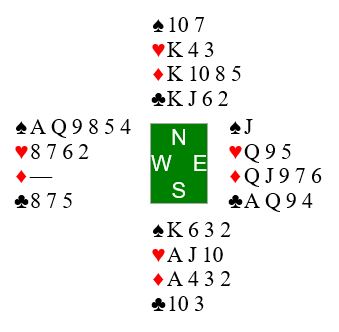What’s usually referred to as “counting the hand” might better be termed visualizing the unseen hands. Experts don’t count. They rectify hand patterns from clues during bidding and play. Once they have done that, they have “gotten a count on the hand” or “rectified the count”, meaning they have deduced shapes of unseen hands.
Here is a nice declarer play exercise in visualizing hand patterns by Eddie Kantar*.
Follow the first eight tricks:
- West cashes the ace of hearts, East playing the nine
- West cashes the king of hearts, East playing the five
- West play the nine of clubs, East playing low, you win the queen
- You cash the king of spades, West discarding a heart
- You cash the ace of spades, another heart from West
- You cash the queen of spades, another heart from West
- You go to the king of clubs, West following low
- You cash the ace of clubs, West discarding a heart while you discard a low diamond
Tell me the hand pattern West started with? How many diamonds did East start with? How are you going to play the diamonds?
Were you able to “rectify the count” after trick eight?
*https://www.amazon.com/Test-Your-Bridge-Play-2/dp/1554947758
Scroll down for the answer if you need help:
At trick 3 you know that West started with 7 hearts, East with 2 hearts.
At trick 4 you discover that West started with zero spades, East with 4 spades.
At trick 8 you discover that West started with 2 clubs, East with 6 clubs.
Now you can rectify the count: West started with zero spades, 7 hearts, ?? diamonds, and 2 clubs. How many diamonds did West start with? How many diamonds did East start with? Hint: All four hands contain a total of 13 diamonds.
Now you know how to play the diamonds.
